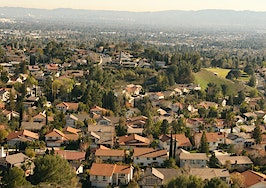New markets require new approaches and tactics. Experts and industry leaders take the stage at Inman Connect New York in January to help navigate the market shift — and prepare for the next one. Meet the moment and join us. Register here
The influx of remote workers to cheaper locales has been pinpointed as one of the main drivers of unprecedented home price growth in areas like the Sun Belt, turning once-affordable areas like Austin and Phoenix into some of the hottest real estate markets in the country.
While remote work drove housing prices through the roof during the pandemic in some areas, a new analysis released by the public policy organization the Economic Innovation Group argues that remote work may lead to greater housing affordability in the long run.
The analysis posits that the areas remote workers are relocating to — chiefly, the Sun Belt region and suburban areas outside major American cities — are some of the areas best suited to take on new housing construction, rather than big cities.
“People are able to consider affordability more, while putting less weight on, ‘I need to be near the office,'” Adam Ozimek, the chief economist at the Economic Innovation Group told Insider.
Areas like that — far from the traditional centers of commerce — tend to have cheaper land to build on, less red tape for developers, and have constructed more new housing in recent years when compared to major cities like New York and San Francisco. Once the supply of housing catches up to the demand created by remote work, rents will begin to come down, according to EIG’s prediction.
This won’t happen overnight, though. Lots of newly constructed housing is expected to come on the market in the coming months but it’s unlikely to be enough to slow demand, and builders are pulling back construction in the face of high interest rates and inflation.
But EIG argues that workers being able to live wherever they want without considering the office will undoubtedly have as positive impact on housing affordability in the long run.
More than 917,000 units are currently under construction across the United States, according to RealPage Market Analytics — the second largest volume the nation has ever seen which is expected to boost the nations housing base by 4.9 percent. The expected increase in housing supply means things may get easier for renters in the near future, experts told Insider.
“This spike in prices in the short term should be followed by moving toward a new equilibrium, which does mean a bit of a cooldown in housing costs,” Jeff Tucker, a senior economist at Zillow, told the outlet.
Any decline in housing costs will be accelerated by exactly what remote workers did during the pandemic: relocate to cheaper places like the Sun Belt. Those locales in many cases happen to be building the most housing, which is how they manage to stay cheap in the first place, the study explains.
“The types of places that this pandemic and remote work happened to push people are exactly the types of places in America where supply is pretty elastic,” Tucker told Insider.
The study acknowledges that none of this will come to fruition without significantly more housing supply coming on the market, which has been thrown into question in the future by the steep rise of inflation and interest rates.
“We need to get through this high inflationary period that the Fed is trying to tamp down,” Ozimek told Insider. “Then I think we’ll see more normalized conditions in the housing market and some sort of gradual adjustment of supply to demand.”
Questions also remain about the future of remote work, with some CEOs pushing for a return to the office, and a weakening labor market making some less inclined to offer remote work as a perk. However, a looming recession may motivate some executives to look for ways to save money on real estate.













